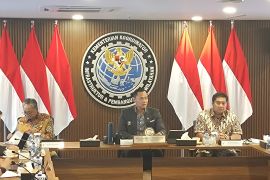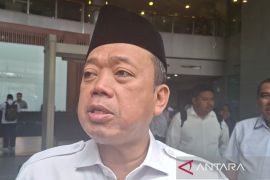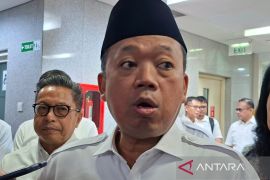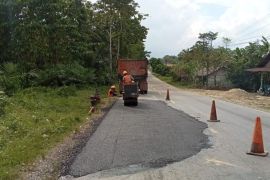Trade Minister Enggartiasto Lukita stated here on Tuesday that rice traders claimed they still had earlier rice stocks bought at a higher price due to which they will need a transition period before they can adhere to the ceiling price for medium- and premium-quality rice.
"The regulation (of the rice ceiling price) came into effect on Sept 1, and there are previous stocks. Next week, we will evaluate to review its implementation. We can warn (the traders)," Enggartiasto noted.
Ministerial Regulation No. 57 of 2017 on the rice ceiling price will be effective not only for modern markets but also for traditional markets.
"We have summoned the Indonesia Retailers Association, as they could sell their previous stocks, but the price must be lowered. In traditional markets, they still have a transition period, as they have to first sort out the rice types," the minister added.
The government has set the rice ceiling price for medium and premium quality in a bid to maintain the peoples purchasing power and control the inflation rate.
The ceiling price for medium-quality rice in the regions of Java, Lampung, South Sumatra, Bali, West Nusa Tenggara, and Sulawesi was set at Rp9,450 per kg while for premium quality at Rp12,800 per kg.
For Sumatra region except Lampung and South Sumatra, East Nusa Tenggara, and Kalimantan, the ceiling price for medium-quality rice was set at Rp9,950 per kg and Rp13,300 per kg for premium quality.
For Maluku, including North Maluku and Papua, the ceiling price of medium-quality rice was set at Rp10,250 per kg and Rp13,600 per kg for premium quality.
The government has categorized the commodity into three types based on Agriculture Ministers Decree No. 31 of 2017 on rice quality.
The first type is medium-quality rice, with minimum 95 percent of milling degree, maximum 14 percent of moisture content, and maximum quantity of broken rice at 25 percent.
Medium-quality rice can be sold in bulk or packages, with labels detailing the quality and its ceiling price.
The second type is premium-quality rice, with 95 percent of milling degree, maximum moisture content of 14 percent, and maximum quantity of broken rice at 15 percent.
This type of rice must be sold in packages, with labels detailing the quality and its ceiling price.
Another rice category was special rice including Thai Hom Mali, Japonica, Basmati, sticky rice, organic rice, and rice, with a geographical indication certificate.
The commoditys average price has also recorded an increase since the implementation of the ceiling price in early September.
According to the ministrys Basic Necessities Monitoring System, the national average price for medium-quality rice as of Tuesday was Rp10,610 per kg, a slight increase from Rp10,596 per kg on Monday.(*)
Editor: Heru Purwanto
Copyright © ANTARA 2017











